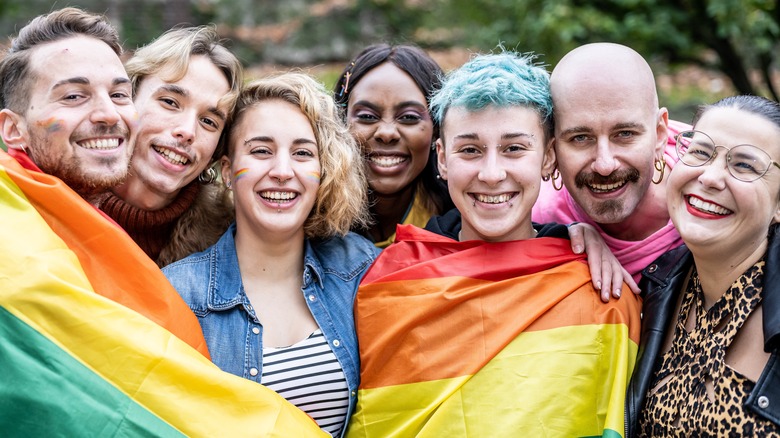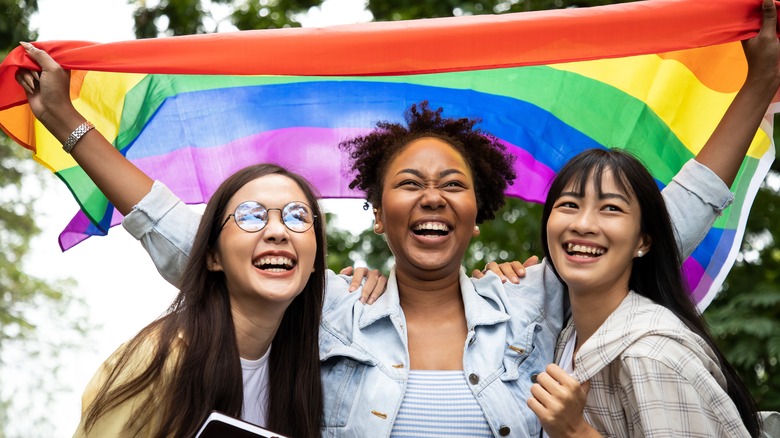Gynosexual: What It Means & How To Tell If It Describes You
Sexuality is a complex aspect of human identity and has been a heated topic of mainstream discourse for decades, especially since there is no one way to express it. Influenced by a variety of factors, including biology, psychology, personal experiences, affirmations, and culture, sexuality is manifested in a multitude of ways. The sexuality spectrum encompasses various orientations and preferences that stretch far beyond the traditional gay, straight, bisexual, or pansexual.
One such orientation that's not commonly discussed is gynosexuality. Derived from the Greek word "gynaika," meaning "woman," the prefix "gyno" implies that a gynosexual is attracted to anyone who identifies as female, is feminine looking, or exhibits feminine characteristics. While a relatively new concept, it is important to understand and acknowledge this orientation as a valid expression of human sexuality. This article will break down what gynosexuality means, and you will soon be able to tell whether it describes you.
What does it mean?
A gynosexual is a person who finds the female anatomy (such as breasts), feminine characteristics (soft facial attributes, high-pitched voices, long hair), and femininity (certain behaviors and mannerisms) to be sexually attractive. While lesbians and straight men fit this description to a T, the term gynosexual encompasses many more than just that. And this is primarily because the object of sexual attraction of a gynosexual, although feminine, doesn't have to be female.
On the contrary, people who identify as gynosexuals are attracted to individuals with behavioral and physical characteristics, despite their gender and all gender identities. For example, a gynosexual straight woman will be attracted to males with soft facial features, slender figures, feminine mannerisms, and a higher-pitched voice. In this respect, being a straight woman and identifying as gynosexual is possible! On the flip side, a lesbian may be attracted to a more androgynous female and, therefore, while lesbian, won't identify as gynosexual. Similarly, a gynosexual could find transgender people sexually attractive even though they were born male. Or, they could be attracted to men who are still biologically male but have feminine characteristics.
And a little bit of history
People who identify as non-binary, genderqueer, transgender, agender, and non-cis often find themselves explaining their gender and that of the person they are sexually attracted to. To avoid this, the term gynosexual emerged to allow people to use a more inclusive language when referring to themselves.
Using the term gynosexual, a person can refer to certain aspects of beauty they find sexually attractive without having to make a connection to their own gender. Instead of calling themselves lesbian or straight, gynosexuals can freely express their attraction to feminine characteristics — without labeling their own gender. Understandably, this gives non-binary people a more inclusive platform to talk about their sexuality without using gender-assuming words.
Moreover, the term gynosexual allows a person to express their sexual attraction to feminine qualities without necessarily implying that their object of affection identifies as female. This flexible definition offers greater freedom in describing one's attraction. For example, if someone is attracted to traditionally female body parts, such as breasts (either on males, females, or non-binary people), using the term gynosexual can be an inclusive way of expressing attraction while respecting diverse gender identities.
In other words, the term gynosexual is helpful in scenarios where someone wants to express attraction to women while including individuals who don't fit traditional gender roles or expectations. This term can benefit queer spaces where inclusivity and respect for diverse identities are valued.
Could you be a gynosexual?
Gynosexuality can be manifested and experienced in many different ways since the term itself is meant to be inclusive. However, if you are a straight woman wondering whether you could be gynosexual, some signs could help clarify things for you.
For instance, are you drawn to effeminate men more than you lust over six-pack models? You are probably gynosexual if you are always looking for graceful, soft-spoken men with delicate mannerisms and feminine characteristics. And if the sight of macho men full of testosterone doesn't make you tingle, but you find yourself staring and admiring beautiful female bodies, gynosexuality could be describing you.
Of course, finding hyperfeminine women super attractive doesn't make you a lesbian or bisexual — unless you also want to have sex with them. However, if you ever wondered why you find a curvy female body extremely visually appealing, now you know. Gynosexuality can be experienced by straight women as much as lesbians and by straight men as much as gay men.
Related terms that are useful to know
Human sexuality and romantic attraction are complex and diverse concepts that can be difficult to define and understand. Many times terms are closely intertwined, and navigating through the nuances and specificities of each can be difficult. Similarly, the term "gynosexual" has several related tangential words that closely resemble each other. Understanding the variations of these representations is crucial to describe one's own sexual and romantic identity accurately, but also to respectfully treat and interact with others who may identify with one of these terms.
The word "gynosexual" replaced femsexual, which is no longer used. Currently, several other terms closely related to gynosexuality exist. For example, gynophilia (from the Greek word gyno, meaning woman, and philia, meaning love) refers to someone's love of femininity. So while gynosexuality relates to someone being sexually attracted to feminine characteristics, gynophillia refers to seeking romantic love with someone with feminine traits.
Gynoromantic also refers to seeking romantic relationships with women but unlike gynophillia, a gynoromantic won't seek romantic love with effeminate males, transgender or non-binary people. Similarly, a womansexual, is sexually attracted to women, but unlike a gynosexual, they won't feel sexual attraction to effeminate individuals who don't identify as a woman.
Gynosexuality and androsexuality
What's the difference between gynosexuality and androsexuality? Well, to put it in simple terms, one is the polar opposite of the other. AASECT-certified sexuality educator, Elizabeth Boskey, Ph.D., tells WomensHealth that "someone is androsexual if they are attracted to men or masculinity. Someone is gynosexual if they are attracted to women or femininity."
Much like gynosexuality, androsexuality is more about who you are attracted to rather than the gender of that person. Moreover, you can identify as androsexual regardless of your gender. According to Boskey, "being androsexual may include being attracted to cisgender men, but it may also mean being attracted to transgender men, masculine women, or masculine non-binary individuals."
Whether transgender or cisgender (the gender corresponding to the sex you were born with), you can freely describe yourself as androsexual if you find male attributes hot as hell. But gynosexual if the sight of feminine mannerisms and physical characteristics excite you. By definition, a gynosexual can't also identify as androsexual, and vice versa.
Flag and pronouns
In case you were wondering, a gynosexual flag does exist and consists of three colors: pink, brown, and green. The top pink layer — borrowed from the trans flag — represents the attraction to women. The brown middle layer represents stability and support between all sexual orientations. The bottom green layer, taken from the genderqueer flag, symbolizes femininity and feminine characteristics. While there is a gynosexual flag, no universally accepted symbol is used for gynosexuality.
People identifying with gynosexuality can be male, female, non-binary, or genderqueer, and this means that gynosexuality isn't a term exclusive to cisgender men. Since a person of any gender can also be a gynosexual, no particular pronouns are used to describe them.
Typically, the use of pronouns when referring to gynosexual individuals varies according to the individual's preference. While some gynosexual individuals prefer the gender-neutral pronouns they-them, others will choose to associate with traditional gender-specific pronouns like he-him and she-her. Using appropriate language and respecting pronoun preferences is paramount in promoting an inclusive environment where every person feels accepted, respected, and included, regardless of gender and sexual or romantic attraction.
How can you support a gynosexual in your circle of friends?
Gynosexuality is a relatively new term not often mentioned in mainstream discourse. Consequently, individuals identifying as gynosexual may need to explain themselves constantly. It's essential to accept the sexual orientation of your friend or loved one who identifies as gynosexual and create a safe space for them to express themselves without worrying about you being judgemental, critical, or questioning. Supporting your friend and the broader LGBTQ community as an ally is paramount.
It is also important to educate yourself so you don't fall into the trap of asking your loved ones inappropriate questions. Trust us; your bestie doesn't want you questioning that she is straight but attracted to males with female characteristics. Or if your friend is gay, they also don't want you wondering how they can be attracted to effeminate males instead of that gym-rat divine hunk you have your eyes set on.
Remember, who each person is attracted to is strictly their business, and as their friend, you need to accept and respect them for who they are and who they like.







